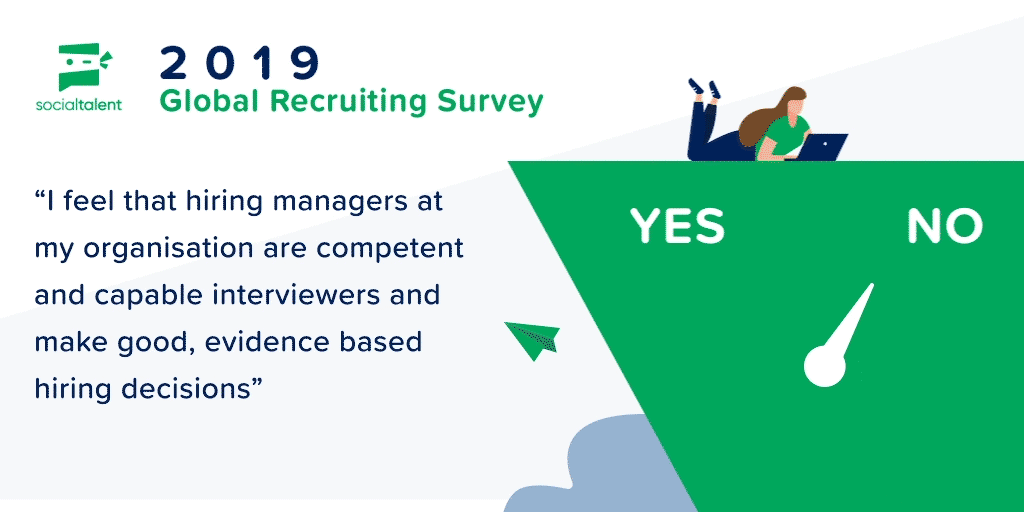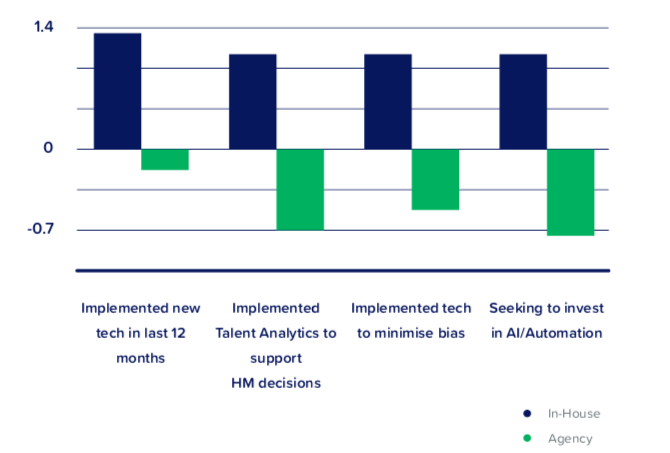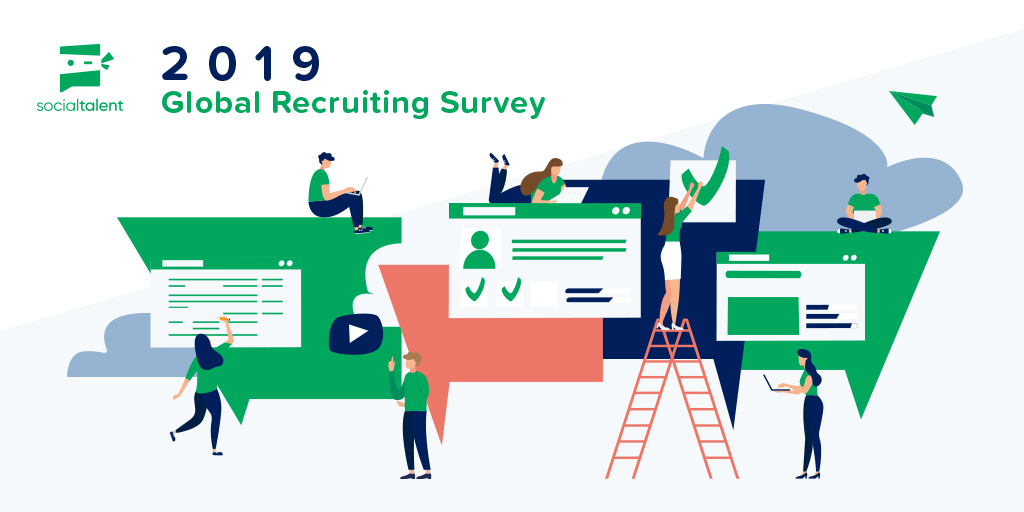4 Key Takeaways from the SocialTalent Global Recruiting Survey 2019
This year we are launching the fourth edition of the SocialTalent Global Recruiting Survey. When carrying out this survey each year, we see how reality can differ from what is traditionally believed and published throughout the recruitment industry. This level of data collection from recruiters all around the world allows us to dig deeper into the way recruiters work, so we can turn anecdotal beliefs into fact or fiction.
The Basics:
Recruiters surveyed: 1600
Total countries: 92
Agency, In-house and third-party providers
If you missed the survey this year don’t worry. We have summarised our four key takeaways from our results this year. The SocialTalent Global Recruiting Survey is available to download so you can see what everyone thinks about recruitment in 2019
1. The real key to reactive vs strategic recruiting
From examining the differences between a reactive and a strategic recruiting model it’s clear that the relationships with hiring managers and the control the recruiter has over the recruiting process have a major impact.
Recruiters need to be able to create time to work on more strategic activities like forecasting, market analysis and brand awareness.
- Only works on approved requisitions
- No awareness of the hiring plan for the year/period or any short-term headcount plans
- Must go out to market every time a req is opened
- Poor at building Hiring Manager relationships
- Very little interview structure or design
- Works on job role profiles as well as open requisitions
- Full transparency on the hiring plan
- Active database of nurtured candidates
- Hiring managers are prepped with strong interview skills and a clear process
- Candidate experience is carefully managed and fine-tuned according to feedback
2. Recruiters relationships with hiring managers

Our questions highlighted the effect that a balanced relationship between recruiters and hiring managers can have on the success of the recruitment process. Some recruiters responded that their hiring managers would prefer to review dozens of resumes — the average shortlist for inbound candidates is 17, the median is five.
Recruiters who act as Talent Advisors ie. adopt a consultative role with their hiring managers, are aligned and clear on “What Does Good Look Like?” for each requisition. Because the recruiter has acted as a project manager for the recruitment process there is closer alignment between the two parties and therefore, a higher success rate.
The optimum goal for a recruiter is that Hiring Managers’ accept the shortlist that is presented to them i.e. will interview all those on the shortlist and choose a hire from that pool.
3. The evolution of the recruiter role
To become an effective and strategic recruiter it’s clear that a recruiter in 2019 will have a different role than recruiters of five years ago. Recruiters now need to start taking control over parts of the hiring process that traditionally they would not have been heavily involved in.
However, it is now time to make another improvement, in order for recruiters to develop professionally it is now time to act as Talent Advisors. This means recruiters should use professional knowledge and experience to educate and influence the future of hiring within companies. Working closely with hiring managers is the first step to achieving this goal.
There are different parts of the recruitment process that recruiters have direct control over compared to what they can influence. A strategic recruiter can learn to influence the part of the recruitment process that they do not have direct control over. This helps them keep all parties aligned and on track for success.
4. Who trumps who when it comes to technology?

Every year gives rise to a fresh wave of tech-obsession. AI and Automation are constant buzzwords, but does it lead anywhere? We asked our respondents to give us insights as to how their companies are approaching the tech revolution. Are people really as tech-obsessed as they claim to be?
The results indicate that in-house recruitment teams are far more comfortable with adopting new technology than agency teams. The future of recruitment and the tech that supports it is a constant conversation and it is fascinating to see that recruitment agencies are at risk of being left behind.
Do these takeaways reflect what you believe about the direction the recruitment industry is moving? This year’s survey surprised us in several ways and reminded us that we must always think critically. Our experience isn’t always the norm and it’simportant we keep informed in order to be competitive.
Download the SocialTalent Global Recruiting Survey 2019 for a full picture of the recruiting landscape and the pressures that talent professionals are facing this year.

